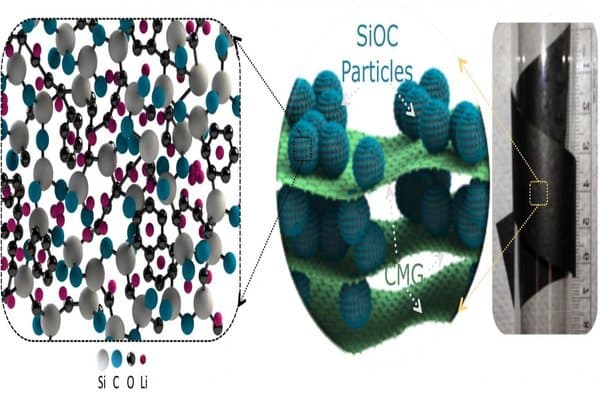Paper Like Material Based Electrode Boosts Aerial Vehicles
A research team from the University of Kansas has recently engineered a paper-like graphene made battery electrode which has all the properties in correct proportions to optimize space exploration and aerial vehicles. Gurpreet Singh, associate professor of mechanical and nuclear engineering at the University of Kansas and his colleagues had chosen silicon oxycarbide-glass and graphene to design the battery at the molecular level.
The amalgamation sports both the features of its parent compound and features properties such as a lightweight, greater cycling efficiency, cost effectiveness and flexibility. This material can work at temperatures as low as minus 15 degrees C which uniquely proves its capability in terms of efficiency in extreme environments.

The team was ready to merge graphene and silicon to use it as a material for a battery, but a low capacity/volume, poor cycling efficiency and chemical-mechanical instability led the team to engineer another supporting electrode made of glassy ceramic called silicon oxycarbide sandwiched between customized graphene layers. Professor Singh explained that the electrode can produce a 200 miliampere-hour per gram power even in extreme environments, which further strengthens the team’s wise choice.
Silicon oxycarbide is a modified spin off of available silicon which is processed from liquid resin and stacked in layers to devise an open 3D cage suitable for storing lithium and support the ion transportation in reaction time. The team emphasized on the point that their goal is yet to be fulfilled as they are planning of producing a similar result on a larger scale and also experimenting its application in 3D printing.
The research was supported by the National Science Foundation and the complete research was documented in the Nature Communications journal.
Source:<a href="https://www.k-state.edu/media/newsreleases/mar16/singh33116.html" target="_blank" rel="nofollow noopener noreferrer">Mechanical engineer builds 'ready-to-go' battery electrode with glass-ceramic | Kansas State University | News and Communications Services</a>
The amalgamation sports both the features of its parent compound and features properties such as a lightweight, greater cycling efficiency, cost effectiveness and flexibility. This material can work at temperatures as low as minus 15 degrees C which uniquely proves its capability in terms of efficiency in extreme environments.

The team was ready to merge graphene and silicon to use it as a material for a battery, but a low capacity/volume, poor cycling efficiency and chemical-mechanical instability led the team to engineer another supporting electrode made of glassy ceramic called silicon oxycarbide sandwiched between customized graphene layers. Professor Singh explained that the electrode can produce a 200 miliampere-hour per gram power even in extreme environments, which further strengthens the team’s wise choice.
Silicon oxycarbide is a modified spin off of available silicon which is processed from liquid resin and stacked in layers to devise an open 3D cage suitable for storing lithium and support the ion transportation in reaction time. The team emphasized on the point that their goal is yet to be fulfilled as they are planning of producing a similar result on a larger scale and also experimenting its application in 3D printing.
The research was supported by the National Science Foundation and the complete research was documented in the Nature Communications journal.
Source:<a href="https://www.k-state.edu/media/newsreleases/mar16/singh33116.html" target="_blank" rel="nofollow noopener noreferrer">Mechanical engineer builds 'ready-to-go' battery electrode with glass-ceramic | Kansas State University | News and Communications Services</a>
0
